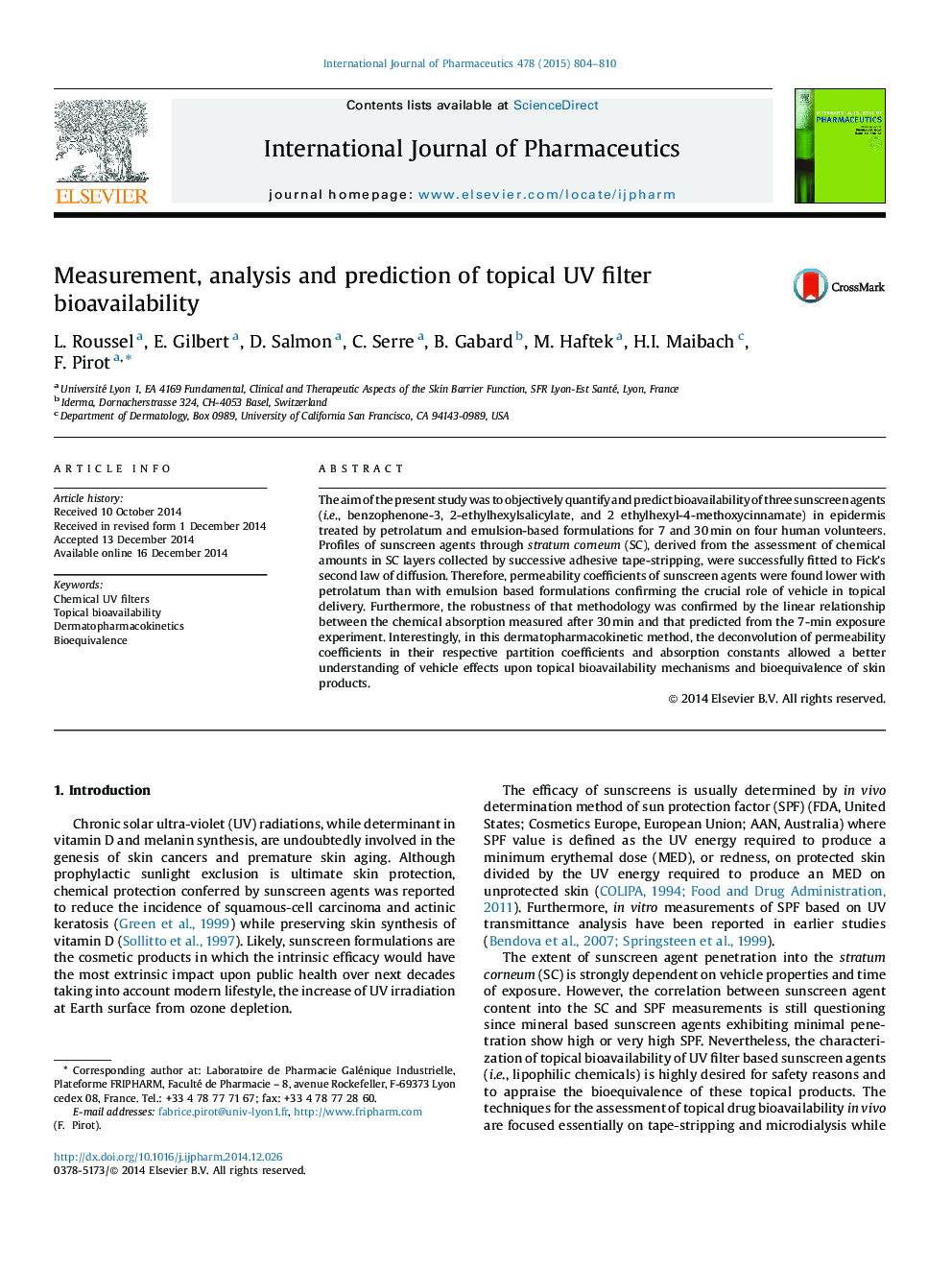| Article ID | Journal | Published Year | Pages | File Type |
|---|---|---|---|---|
| 2501765 | International Journal of Pharmaceutics | 2015 | 7 Pages |
The aim of the present study was to objectively quantify and predict bioavailability of three sunscreen agents (i.e., benzophenone-3, 2-ethylhexylsalicylate, and 2 ethylhexyl-4-methoxycinnamate) in epidermis treated by petrolatum and emulsion-based formulations for 7 and 30 min on four human volunteers. Profiles of sunscreen agents through stratum corneum (SC), derived from the assessment of chemical amounts in SC layers collected by successive adhesive tape-stripping, were successfully fitted to Fick’s second law of diffusion. Therefore, permeability coefficients of sunscreen agents were found lower with petrolatum than with emulsion based formulations confirming the crucial role of vehicle in topical delivery. Furthermore, the robustness of that methodology was confirmed by the linear relationship between the chemical absorption measured after 30 min and that predicted from the 7-min exposure experiment. Interestingly, in this dermatopharmacokinetic method, the deconvolution of permeability coefficients in their respective partition coefficients and absorption constants allowed a better understanding of vehicle effects upon topical bioavailability mechanisms and bioequivalence of skin products.
Graphical abstractFigure optionsDownload full-size imageDownload high-quality image (66 K)Download as PowerPoint slide
